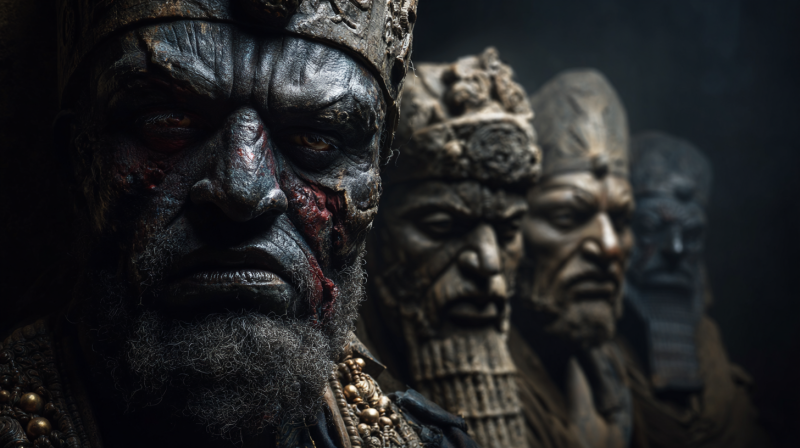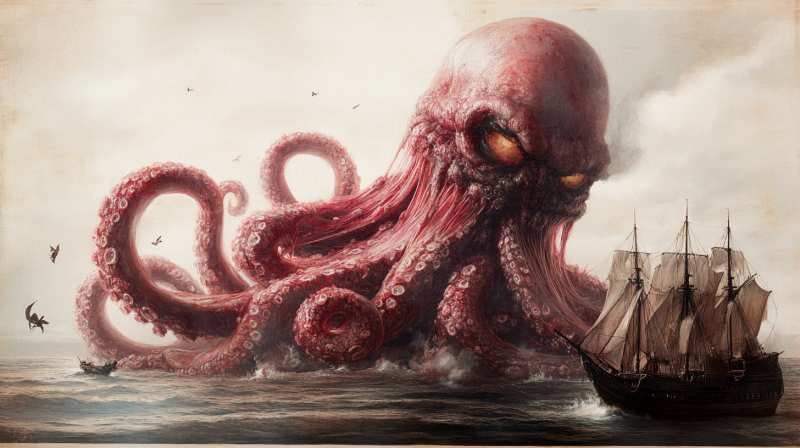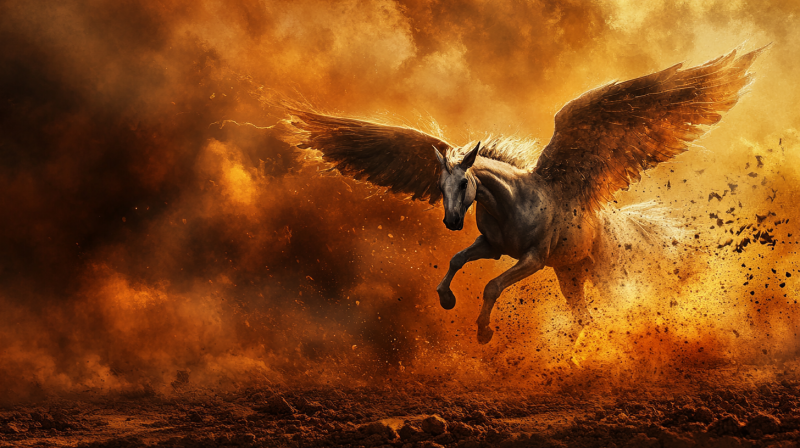The Legendary Creature that Haunted the Aztec Waters
Among the myriad spirits, deities, and creatures that populate Aztec mythology, one stands out for its eerie mystery and uniquely terrifying traits: the Ahuizotl. This creature was feared by the ancient Aztecs as a dangerous guardian of waters, possessing the strength to drag victims to watery graves with an unrelenting, iron grip.
But the Ahuizotl was no ordinary beast—it was a creature that embodied a supernatural enigma. Imagine a creature with the body of a dog, sharp, predatory claws, and a sinister, almost human-like hand on its tail. Legends claim that the Ahuizotl would cry out, mimicking a baby or a drowning person to lure unwary travelers or fishermen. For those who ventured too close, it was often the last thing they would ever hear.
Read on to dive deep into the mythos of the Ahuizotl, examining its place in Aztec culture, its terrifying characteristics, and the ways it continues to capture the imaginations of those who hear its story.
Who—or What—is the Ahuizotl?
To understand the Ahuizotl, we first need to set the scene: the lush and dangerous environment of Mesoamerica, where rivers and lakes were more than just sources of water. For the Aztecs, these bodies of water were home to powerful and often dangerous spirits, of which the Ahuizotl was among the most feared.
The creature’s name, “Ahuizotl,” roughly translates to “spiky one of the water” in Nahuatl, an apt descriptor for its fearsome nature. As much as it was a natural predator, the Ahuizotl was also a protector of treasures buried in the lake beds or river depths. It wasn’t merely an animal but a guardian, a creature of the spirit realm tasked with enforcing divine justice upon those who dared disturb its watery domain.
Physical Appearance: More than Meets the Eye
Descriptions of the Ahuizotl vary across accounts, but certain core characteristics are consistent. Many describe it as a creature with the body of a small dog, the ears of a monkey, and a glossy black coat that almost seemed to blend into the night. But what made the Ahuizotl truly horrifying was its tail—a long, sinuous appendage that ended in a hand-like claw, perfectly adapted to grabbing anything (or anyone) within reach.
Its glossy black fur and dog-like appearance were deceptive; it looked almost unremarkable at first, but its unnaturally dark, almost wet-looking coat made it blend seamlessly with the water. This trait, combined with its tendency to haunt the shores and lakebeds, made the Ahuizotl practically invisible until it was too late.
It was said that the Ahuizotl’s tail-hand possessed the strength to drag even the largest warrior under the water without a struggle. The legend claimed that those unfortunate enough to fall victim to the Ahuizotl would meet a terrible fate—many were found with eyes, teeth, and nails removed, a gruesome detail that only added to the creature’s terrifying reputation.
The Haunting Calls of the Ahuizotl
One of the most sinister aspects of the Ahuizotl myth is its eerie cry, often compared to the sound of a baby or a person in distress. According to Aztec legends, the creature would use this cry to lure unsuspecting passersby close to the water’s edge.
Imagine a quiet night by the lake, interrupted by the plaintive wails of a child. Driven by a sense of duty, a person might rush toward the sound, only to be met with an empty shore. It’s at this moment, just as they begin to relax, that the Ahuizotl strikes, its tail-hand latching onto its victim and pulling them into the murky depths.
This tactic wasn’t just a way to catch prey; it was a reminder of the unknown dangers lurking in nature. For the Aztecs, the cry of the Ahuizotl was a symbol of the unseen perils in their world, of the spirits and forces that humans could neither understand nor control.
A Guardian of Treasures and Keeper of Boundaries
The Ahuizotl wasn’t simply a killer; it was a creature with a purpose, one that enforced sacred boundaries. The Aztecs believed that lakes, rivers, and other bodies of water were more than just physical entities—they were sacred spaces that held spiritual energy, knowledge, and, sometimes, treasures.
To disturb these waters, to attempt to fish too deep or dredge too greedily, was to tempt fate. The Ahuizotl existed as a guardian of these sacred places, protecting both the treasures and the sanctity of the water itself.
Anyone who took too much from the water or tried to reach for what wasn’t theirs risked attracting the Ahuizotl’s wrath. The creature acted as a spiritual enforcer, a reminder that some places were not meant to be touched, and some knowledge was not meant to be discovered.
The Ahuizotl in Aztec Culture and Beliefs
In Aztec culture, water was sacred, seen as a life-giving force associated with the gods. The Aztecs believed that spirits inhabited every corner of nature, and bodies of water were no exception. The Ahuizotl, in this context, was not simply a monster but a reminder of the need to respect these powerful forces.
Legends of the Ahuizotl were more than ghost stories; they were cautionary tales meant to instill respect for nature and the spirits. Even if one escaped the Ahuizotl, they might still anger the gods, who were deeply intertwined with every element of the natural world.
For the Aztecs, this creature represented the duality of water as both a life-giving and a life-taking force. In their rituals, they made offerings to appease the spirits of the water, hoping to avoid the wrath of creatures like the Ahuizotl.
Modern Interpretations and Pop Culture
The Ahuizotl’s story has crossed centuries and cultures, and it remains a symbol of the unknown lurking just beneath the surface. In modern times, the Ahuizotl has found new life in various media, from folklore to fantasy novels and video games.
The creature’s eerie nature and its sinister hand-tail make it a perfect fit for tales of horror and fantasy, where it often appears as a mysterious guardian of underwater treasures or an elusive predator. It has appeared in books, games, and shows, captivating audiences with its blend of allure and terror.
But even as it evolves, the essence of the Ahuizotl remains unchanged—a reminder of the mysteries and dangers hidden in the natural world, of the perils that lie in wait for those who venture too far.
ed their place in the universe, sought the favor of their gods, and renewed the delicate balance between the human and the divine.
The Ahuizotl is more than just a monster of Aztec folklore; it is a symbol, a story, and a lesson from ancient Mesoamerican culture. It embodies the Aztec respect for the spiritual world, their reverence for nature, and their understanding of the need for boundaries in life.
In hearing the story of the Ahuizotl, we are reminded of the unknown forces that exist beyond our understanding, forces that may never be tamed or explained. Whether it’s a tale of supernatural horror or a symbol of natural respect, the Ahuizotl continues to haunt and inspire, a testament to the enduring power of myth.
References & Citations:
- Aguilar-Moreno, Manuel. Handbook to Life in the Aztec World. Oxford University Press, 2007.
- López Austin, Alfredo. The Myth of Quetzalcoatl: Religion, Rulership, and History in the Nahua World. University Press of Colorado, 2001.
- Townsend, Richard. The Aztecs. Thames & Hudson, 1992.
- Boone, Elizabeth Hill. Stories in Red and Black: Pictorial Histories of the Aztecs and Mixtecs. University of Texas Press, 2000.





